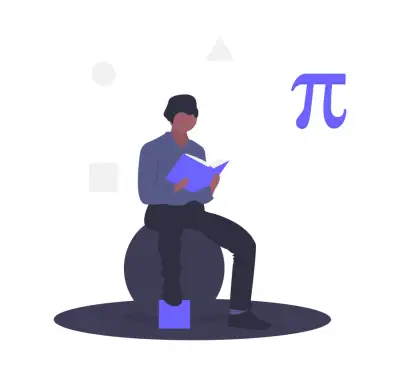Given P(2, -3) and Q(-5, 1)
Midpoint = \((\frac{2 + (-5)}{2}, \frac{-3 + 1}{2})\)
= \((\frac{-3}{2}, -1)\)
Slope of the line PQ = \(\frac{1 - (-3)}{-5 - 2}\)
= \(-\frac{4}{7}\)
The slope of the perpendicular line to PQ = \(\frac{-1}{-\frac{4}{7}}\)
= \(\frac{7}{4}\)
The equation of the perpendicular line: \(y = \frac{7}{4}x + b\)
Using a point on the line (in this case, the midpoint) to find the value of b (the intercept).
\(-1 = (\frac{7}{4})(\frac{-3}{2}) + b\)
\(-1 + \frac{21}{8} = \frac{13}{8} = b\)
\(\therefore\) The equation of the perpendicular bisector of the line PQ is \(y = \frac{7}{4}x + \frac{13}{8}\)
\(\equiv 8y = 14x + 13 \implies 8y - 14x - 13 = 0\)
